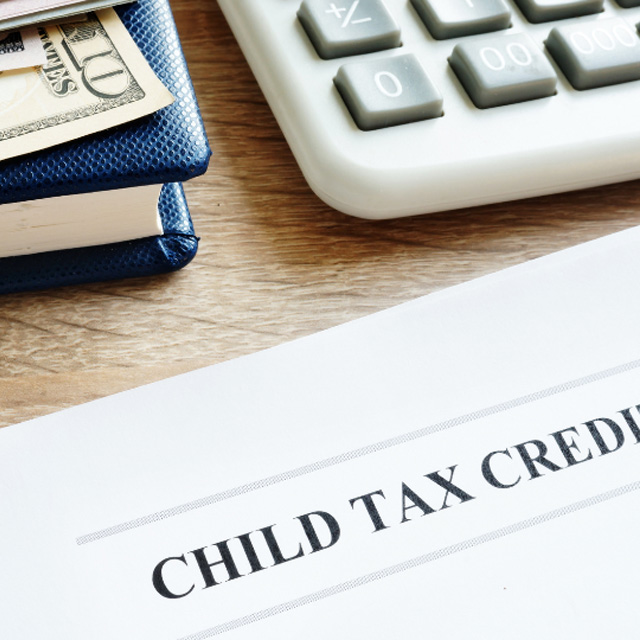The Child and Dependent Care Credit: Getting a Tax Break for Childcare Costs

As a tax professional with years of experience, and as a parent myself, I understand the significant impact the Child and Dependent Care Credit can have on working families. I've worked with single parents juggling multiple jobs, couples struggling with rising childcare costs, and full-time students trying to balance their studies with the need to provide for their children. These aren't just numbers on a tax return; they are real-life stories of people doing their best to support their families.
Tax season can be overwhelming, especially when you're managing a career, a household, and the high cost of care. The Child and Dependent Care Credit can provide much-needed financial relief, making a genuine difference in your financial situation.
What Is the Child and Dependent Care Credit
The Child and Dependent Care Credit (CDCC) is a nonrefundable federal tax credit that helps working taxpayers offset the cost of care for a qualifying child or dependent. To be eligible, the care must be necessary to allow you, and your spouse, if filing jointly, to work or actively look for work.
The credit allows you to claim a percentage of eligible care expenses:
- Up to $3,000 for one qualifying person
- Up to $6,000 for two or more
While the credit is nonrefundable, meaning it can reduce your tax liability to zero but won't generate a refund if the credit exceeds your tax due, it can still significantly lower your overall tax bill.
Our tax software FileYourTaxes.com automatically checks for and applies all eligible credits based on your entries. You don't need to calculate these amounts manually.
Eligibility Requirements
To qualify for the credit, all of the following conditions must be met:
Work-Related Care
The care must be provided so that you (and your spouse, if filing jointly) can work or actively seek employment.
- If you or your spouse are full-time students or physically/mentally incapable of self-care, you may also qualify under special rules.
Qualifying Person
The person receiving care must be one of the following:
- A child under age 13 who is claimed as a dependent
- A spouse who is physically or mentally incapable of self-care and lived with you for more than half the year
- Any other dependent who is physically or mentally incapable of self-care and lived with you for more than half the year
Qualified Provider
For each qualified provider you have, you will be required to include the following on Form 2441.
- EIN if care provider is a business
- SSN if care provider is an individual
- Name
- Address
The care provider cannot be:
- Your spouse
- The parent of the qualifying child (if under 13)
- Someone you can claim as a dependent
- Your own child who is under age 19, even if not claimed as a dependent
If you don't give correct or complete information, your credit (and exclusion, if applicable) may be disallowed unless you can show you used due diligence in trying to get the required information.
The IRS has the following in regards to due diligence: You can show a serious and earnest effort (due diligence) by getting and keeping the provider's completed Form W-10 or one of the other sources of information listed in the instructions for Form W-10. If the provider doesn't give you the information, complete the entries you can on line 1. For example, enter the provider's name and address. Enter “See Attached Statement” in the columns for which you don't have the information. Then, attach a statement to your return explaining that the provider didn't give you the information you requested.
Earned Income Requirement
You must have at least $3,000 in earned income for the year.
- If married filing jointly, both spouses must meet this requirement unless an exception applies.
Important: You must reduce your qualifying expenses by any tax-free dependent care benefits you received from your employer (reported in Box 10 of Form W-2). These benefits directly impact the amount you're allowed to claim for the credit.
Exceptions to the Income Requirement
You may still qualify if:
- Your spouse is physically or mentally unable to care for themselves
- You (or your spouse) were a full-time student for at least five months during the year
What Expenses Qualify?
Eligible expenses must be incurred for the care, well-being, or protection of the qualifying person. These can include:
- Daycare, preschool, or nursery school
- Before- and after-school care programs
- Day camps (note: overnight camps do not qualify)
- In-home care, such as a nanny or babysitter
- Household services (e.g., cleaning or cooking) if they are partly for the care of the qualifying person
How to Claim the Credit
If you're using FileYourTaxes.com, the good news is, it's all calculated for you automatically! If your return qualifies, Form 2441 will be included to ensure the correct credits are applied.
Filing on Paper?
You'll need to:
- Prepare Form 1040 and applicable schedules.
- Complete Form 2441 Child and Dependent Care Credit
- Include required documentation, like your federal copy of any Form W-2s you have.
- Confirm that your income and eligibility meet IRS guidelines

